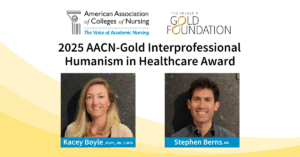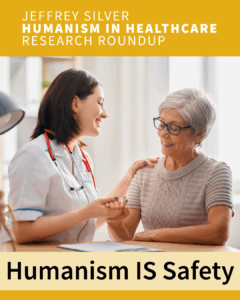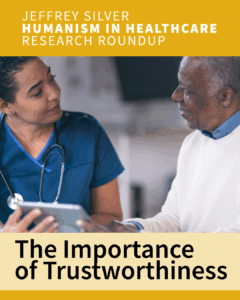by Perry Dinardo
What do you do when the suit you wear to care for isolated patients makes your patients feel even more isolated?
When artist Mary Beth Heffernan saw pictures of the Ebola epidemic begin to emerge from West Africa, she noticed that the healthcare workers’ protective suits–designed to keep doctors and nurses from coming into contact with potentially contagious patients–also prevented those patients from seeing their clinicians’ faces.
Heffernan says “We all know that source isolation is the only way to stop Ebola. But it has devastating psychosocial consequences. The PPE [Personal Protective Equipment] are frightening, and it compounds the suffering the patient is already experiencing from the disease itself. The harm of not seeing a human face for days on end cannot be underestimated. At a moment when patients are already experiencing abject physical suffering, the isolation, facelessness, and lack of touch make them feel abandoned by humanity.”
Heffernan, an artist with a longstanding interest in the power of the portrait, applied for a grant from the Gold Foundation to creatively address the situation using a brilliantly simple solution: attach a photo of each healthcare worker to the outside of his or her suit. She called this idea the PPE Portrait Project.
Sharrie McIntosh, Senior Vice President and Chief Program Officer at The Arnold P. Gold Foundation, says “The Foundation was excited to fund this work because it shows how the simple act of including pictures of caregivers can be so powerful in relieving the stress, anxiety and fear that is being experienced by patients, and at the same time provide caregivers with a way to offer comfort and connection to their patients.”
Heffernan traveled to Monrovia, Liberia with cameras, printers, ink and labels to begin her project. She trained health care workers at various Ebola Treatment Units (ETUs) to take and print each other’s portraits on sticky labels.

photo by Marc Campos
The labels help patients realize these workers are real, caring people. But they also help the workers feel more human. Joy A. Hardt, R.N., the Chief Nursing Officer at IOM-Tubmanburg Ebola Treatment Unit (Bomi County, Liberia) reported to Heffernan in an email, “All the staff agreed that the PPE looked much less scary with a grinning picture on the front and have noted that, when in the Red Zone, the staff also look at the pictures. One doctor said that “the PPE makes everything so impersonal, it is nice to look around and be like, ‘Oh that is Bomia,’ or ‘Oh that is Gorpu.’ It makes it feel more like I am working with people, with my team, instead of inanimate objects.””
Since Heffernan’s departure from Africa, the PPE Portrait Project has been continued on by staff at the Tubmanburg ETU. Her hope is to expand the project to Sierra Leone and Guinea where it is needed most.
Heffernan’s long-term goal is to have PPE portrait labels offered to every patient in source or reverse isolation (where full face shield PPE are not available.) The literature suggests that future iterations of PPE should be made less frightening; her solution of PPE portrait labels are made with simple technology that can be put to use immediately. “I aim to change the standard protocol for medical PPE here in the US and abroad,” says Heffernan.
Though Heffernan has certainly effected change, this work has also changed her. “I’ve been fearless in advancing the PPE Portrait project in a way that I’ve never acted in my prior work. I felt a tremendous urgency to act, to reduce the suffering of Ebola patients and healthcare workers with a simple photographic gesture. Intervening in this crisis has been humbling in many ways, but has also given me a renewed sense of agency in my capacity to make a difference.”
This project has also been featured on:
 Perry Dinardo is a 2014 graduate of Duke University, an employee at Boston Children’s Hospital and a Research Intern at The Arnold P. Gold Foundation Research Institute. She plans to attend medical school in the future and is excited to contribute to the Gold Foundation’s work.
Perry Dinardo is a 2014 graduate of Duke University, an employee at Boston Children’s Hospital and a Research Intern at The Arnold P. Gold Foundation Research Institute. She plans to attend medical school in the future and is excited to contribute to the Gold Foundation’s work.



